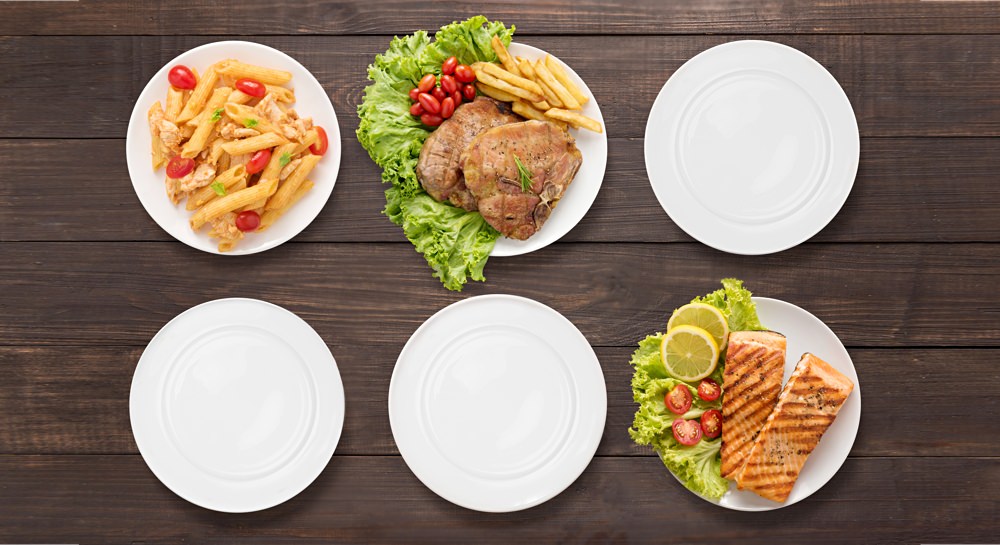How to Get an Effective Workout in Your Lunch Break
It is possible, if you know how to use your time efficiently.
With lengthy commutes, demanding desk jobs and a busy social calendar (or a lack of energy to do anything more than collapse on the sofa of an evening), finding time to exercise can be hard.
So theoretically, working out in your lunch break is a brilliant idea.
In practice though, most of us are put off: we don’t feel we really have time to do a meaningful gym session, shower, eat and get back to our desks.
But this needn’t be the case.
With a spot of forward planning and the knowledge of how to maximise your workout in a short amount of time, you can exercise efficiently in your lunch break and thus find you work even better once back at your desk afterwards.
We spoke to Michael Betts, CEO of TRAINFITNESS, to find out what we need to do in order to fit in a meaningful workout in a lunch break.
Nine tips for working out in your lunch break
1. Schedule your workouts at the weekend for the week ahead
If you don’t actually put your workouts in your diary, it’s all too easy to flake on them. Setting a plan will help you commit to your training and increase the chances of you going.
To show real commitment, write your schedule down and put reminders in your phone. It also helps if you plan to workout with a colleague, as you’ll be less likely to let them down.
“From a psychological perspective, you’ve made an agreement with them and yourself to go and will feel more compelled to see it through,” Betts told The Independent.
2. Always pack your training kit the night before
“When you get up in the morning, you just pick up your gym bag and you’re out the door,” Betts says. “It’ll save you time and reduce the chance of you not bothering, especially if you’re running late.”

3. Pack your lunch to remove temptation
Bringing a packed lunch means you don’t have to waste time in that precious hour going out to buy food. You’ll also be less likely to choose something unhealthy to “reward” yourself for working out.
“Overindulging on ‘rewards’ is one of the main reasons people don’t see results,” Betts explains.
4. Go to a gym that’s close to work
If you have to take public transport, you run the risk of less workout time due to traffic or transportation delays – it can also make the whole experience more stressful and unappealing. A club that’s in walking distance is ideal, and the walking can become your warm-up too.
“A brisk walk to the gym will help increase your core temperature and blood flow to the muscles,” Betts explains. “It will also save you five minutes on the treadmill or bike once you get there, allowing you to spend more time on the training that’s going to get you results.”
5. Bodyweight workouts mean there’s no waiting for equipment
Lunchtimes are quite busy at most clubs, so getting onto equipment can be difficult. If you workout using just your bodyweight, there’ll be no waiting around. All you need is a small amount of space and a mat.
6. Do a full body, Variable Intensity Interval Training (VIIT) workout
“This type of training targets not just the muscles of your entire body but also the different energy systems your body uses,” Betts explains.
You’ll see gains in strength, endurance and you’ll burn more calories. If you’re short on time, it’s a great way to do different types of training all in the one session.
7. A 30 minute lunchtime workout is ideal
“In a 30 minute VIIT workout you’ll do all the different types of training you need in one short session,” says Betts. It also means you have time to get to the gym, change, workout, shower, grab a bite to eat and get back to work.
Check out the example workout further down.
8. A cold shower will help you cool down
No one wants to get back to their desk hot, sweaty and flustered, so take a quick cool shower to bring your body temperature down.
9. Work out before eating
By exercising without too much food in your stomach, you’ll increase your metabolism of body fat, according to Betts.
“The research around intermittent fasting and calorie restriction is very compelling for both weight management and health,” he explains. “You’ve worked out and created a caloric deficit.
“Skipping lunch will mean your body has to get the energy from somewhere and therefore it will start to burn that body fat you’ve been trying to get rid of. Remember, when you break your fast, just eat normally and don’t see your fast as a reason to eat more; that would defeat the purpose.”
So you still eat lunch, just after working out.
T3 blast – example Variable Intensity Interval Training workout, by Michael Betts
Warm-up (5 – 10 minutes)
As mentioned above, use the walk from work to get your body ready to exercise. If you can’t, then jump on the treadmill or bike for five minutes before you move onto the mobilisation.
Mobilisation (2.5 minutes)
This part of the workout aims to mobilise the joints to ensure you have a good range of movement and to make sure your body is ready for the upcoming exercises. Mobilisation exercises are full body movements that slowly take the joints through their full range of motion.
Peripheral Heart Action/PHA (5 minutes)
PHA is about doing exercises which target the lower body followed immediately by exercises that target the upper body. You then continue to alternate between the two. These are generally strength based exercises but because you keep changing the working body part, you also increase your cardiovascular fitness.
There is generally little rest between the exercises and your heart and circulatory systems have to keep moving the blood, carrying oxygen and nutrients for the working muscles, from the lower body to the upper and back again.
Your heart rate and respiration will increase resulting in overall improvements to your fitness. It’s also a great way to increase caloric expenditure in a short amount of time.
Core (5 minutes)

Full body exercises which require core control will also help you burn more calories in a short amount of time. In our sample workout, we use a Single Arm Down Dog to Plank. You’ll find you need to contract all the muscles of your body, especially your core, resulting in you burning more calories.
Agility (5 Minutes)
As we get older, our ability to get up off the floor and do activities that require fast changes in direction decreases. Like all aspects of fitness however, our agility is something that we can train, maintain and even improve over time regardless of age.
By including a five minute agility sequence in your lunchtime workout, you can improve your ability to move around more freely and decrease the chance of injury when doing something that is a little more out of the ordinary.
Balance (5 minutes)
A lack of balance and proprioception (body awareness) can increase the chance of injury. The best exercises designed to improve these things are not just static balances, but dynamic movements that require focus and core control.
The five minute sequence included in our example T3 blast workout will take you through a variety of positions where you’ll struggle to maintain your balance. Each time you do it though, you’ll get better.
Active Recovery (2.5 minutes)
Stretching is important. If we don’t stretch when we exercise, the muscles will shorten over time, they’ll feel tight and the chance of injury is greatly increased. At the end of you VIIT workout, you won’t really have enough time to do a full body stretch. So I have included example of exercises which will help reduce this shortening effect of exercise.
It is highly recommended though – you set aside one to two sessions per week where you can focus on your flexibility. I would suggest a good mid-week stretch and then one on the weekend when you have more time. You won’t need a lot of space and it can be done anywhere.
And just like that, your workout’s done and you haven’t had to get up early or sacrifice your social life in the evenings.
If you get into the habit of exercising at lunchtime, it will just become a normal part of your day, you’ll be more focused at work in the afternoon after having a decent break, you’ll have more energy and – once you start seeing results – you’ll probably never go back to eating al desko.
Source: independent.co.uk
“How to get an effective workout in your lunch break” by:RACHEL HOSIE


